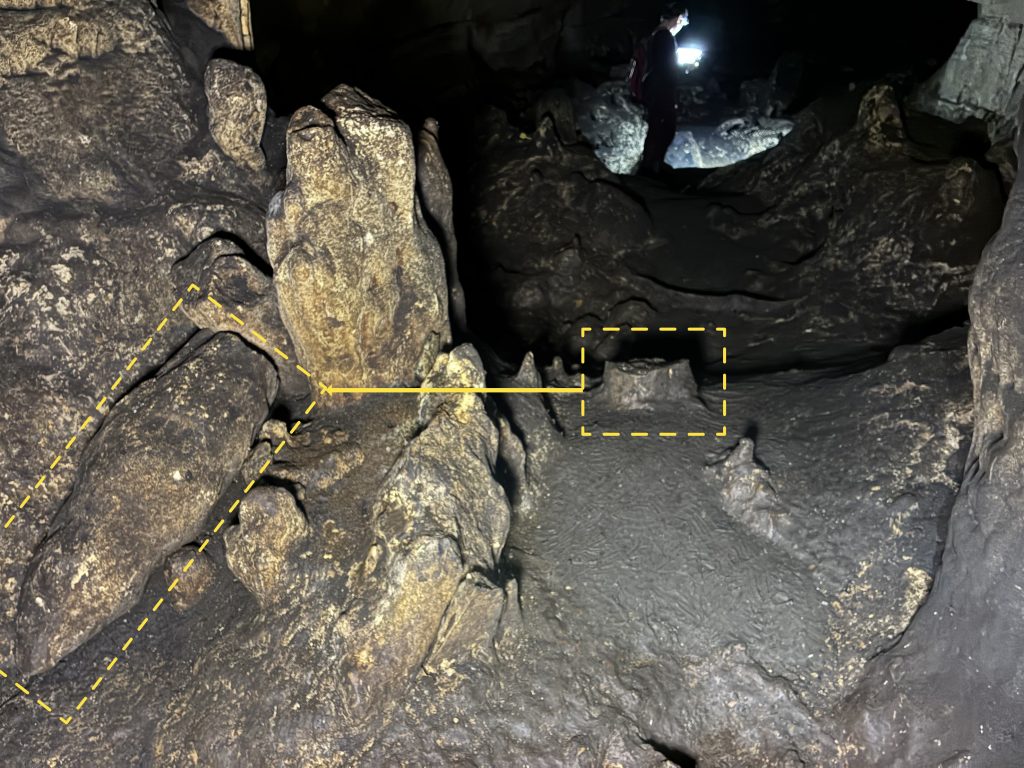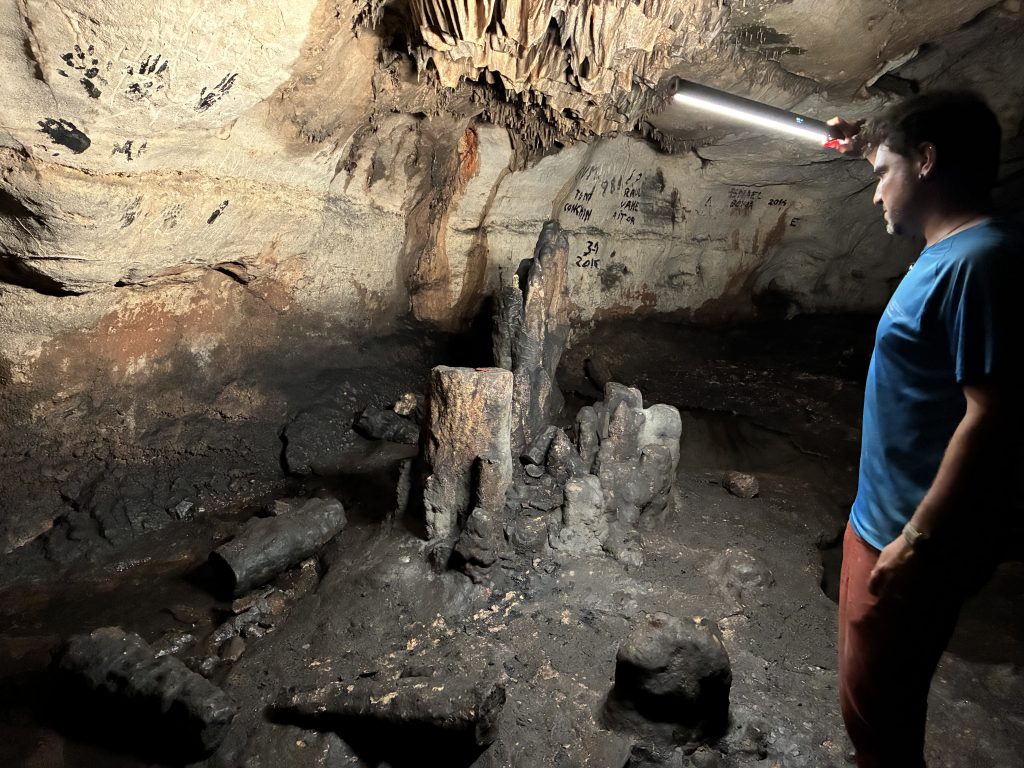
Speleofacts—structures formed by the intentional breaking, rearrangement, or relocation of stalagmites—offer compelling evidence of planned human use of cave environments. The presence of calcite re-growths over some breakage points confirms their prehistoric origin, a hypothesis currently under investigation through a comprehensive interdisciplinary study. One of the most notable examples of such evidence was found in Bruniquel Cave (France), where similar findings proved Neanderthal occupation of underground spaces.
The first speleofacts in Cova Dones were identified during the 2024 campaign, prompting the inclusion of Dr. Iñaki Intxaurbe Alberdi—a specialist in speleofact analysis and postdoctoral researcher at the Universities of the Basque Country (UPV/EHU) and Bordeaux (France). In the current campaign, Dr. Intxaurbe has confirmed the existence of at least one hundred speleofacts. Ongoing research will include geomorphological and archaeological studies, along with a broad radiocarbon dating program to determine the precise chronology and scope of the structures.

This discovery joins a long list of remarkable findings from the cave. In 2023, the journal Antiquity revealed that Cova Dones hosts the largest set of Palaeolithic rock art in eastern Iberia, with over one hundred paintings and engravings dated at more than 24,000 years old. Shortly after, researchers uncovered a Roman sanctuary in a deep chamber of the cave, featuring inscriptions and a coin from the reign of Emperor Claudius.
The DONARQ project, led by Dr. Aitor Ruiz-Redondo (University of Zaragoza and IUCA) and Dr. Virginia Barciela González (University of Alicante and INAPH), is positioning Cova Dones as a world-class archaeological site, fundamental to understanding symbolic practices and the occupation of subterranean spaces across historical periods.
The research team for this campaign includes:
-
Dr. Iñaki Intxaurbe Alberdi (karst geomorphology and transformations)
-
Ximo Martorell Briz (prehistoric art)
-
Jorge Angás and Carlos Valladares (geomatics, DigHER project)
-
Silvia Alfayé and Víctor Sabaté (Roman sanctuary and epigraphy)
-
Neemias Santos da Rosa (taphonomy)

Aitor Ruiz-Redondo is Associate Professor of Prehistory at the University of Zaragoza, researcher at the Aragon Institute for Environmental Sciences Research (IUCA), and affiliated researcher at the Universities of Southampton (UK) and Bordeaux (France).
Virginia Barciela González is Professor of Prehistory at the University of Alicante and a researcher at the University Institute for Archaeology and Historical Heritage (INAPH).
Iñaki Intxaurbe Alberdi is a postdoctoral researcher at the University of the Basque Country (UPV/EHU) and the PACEA Laboratory at the University of Bordeaux.

